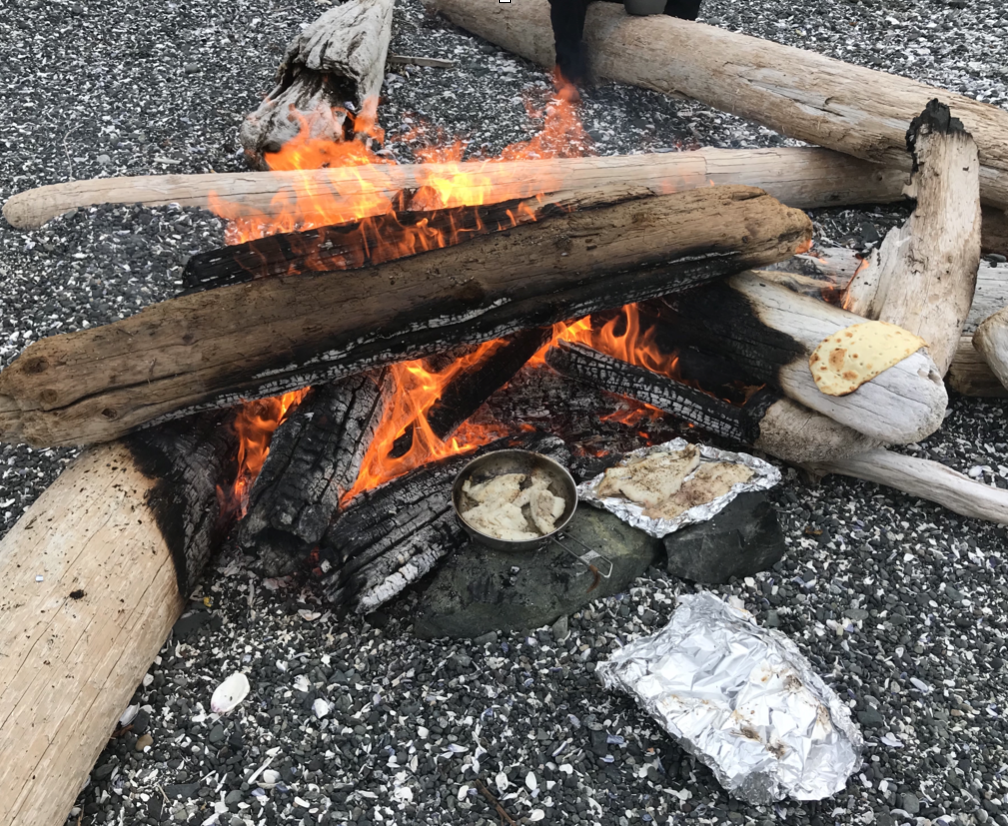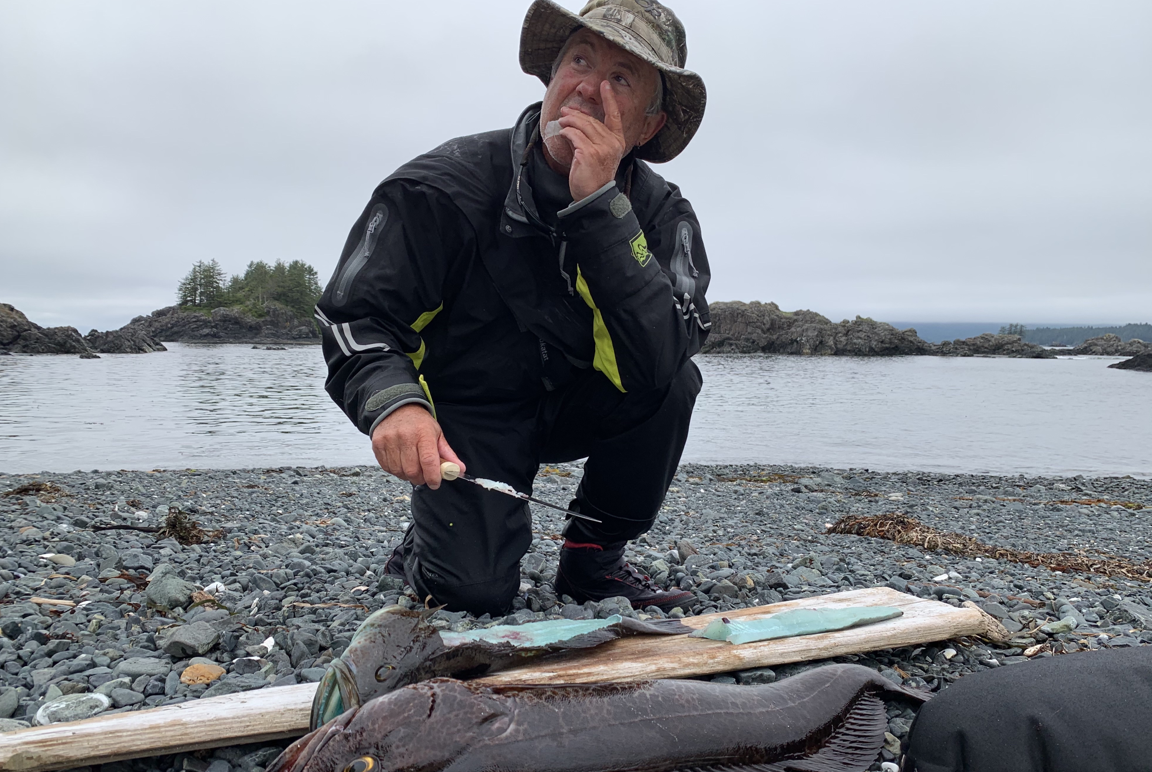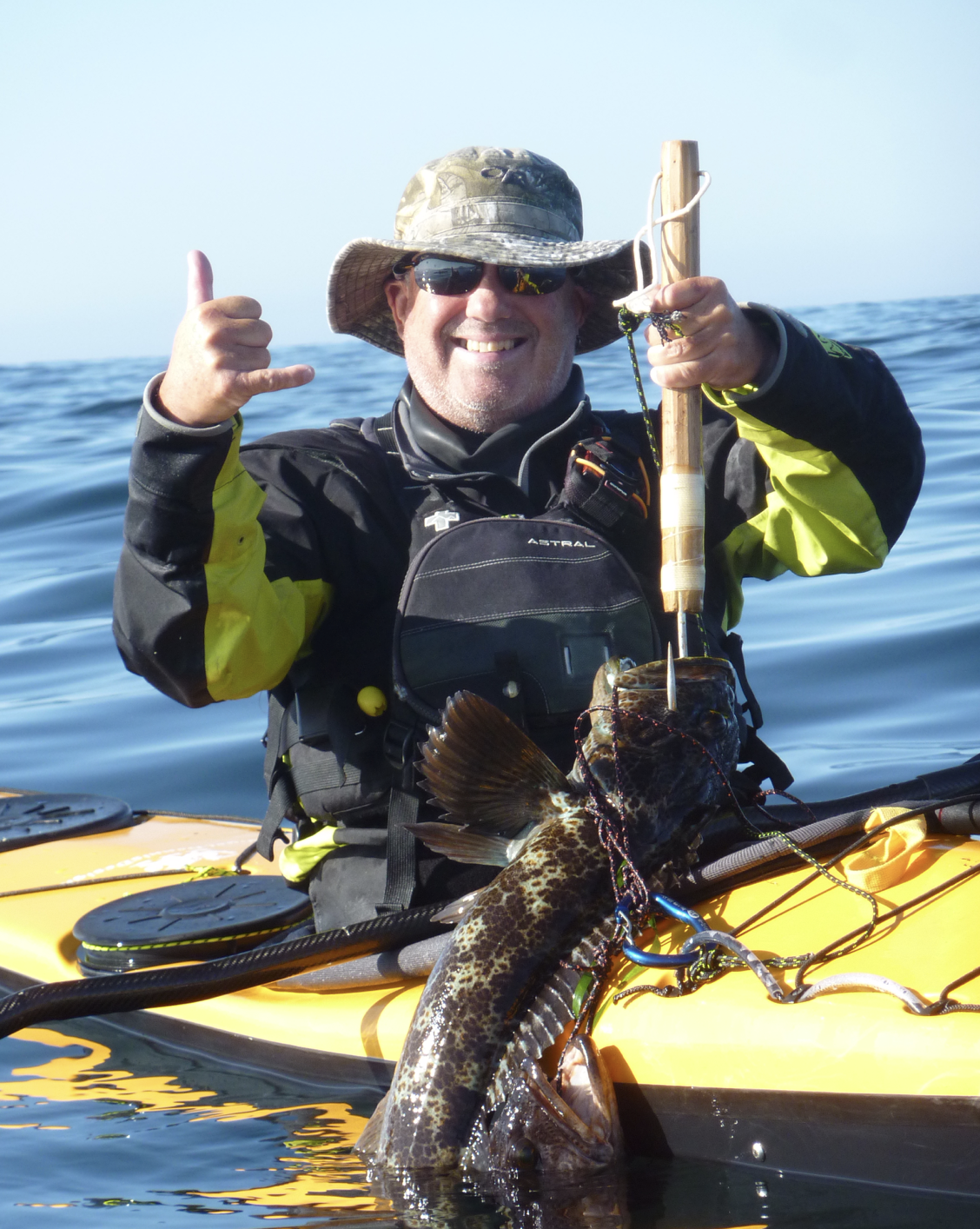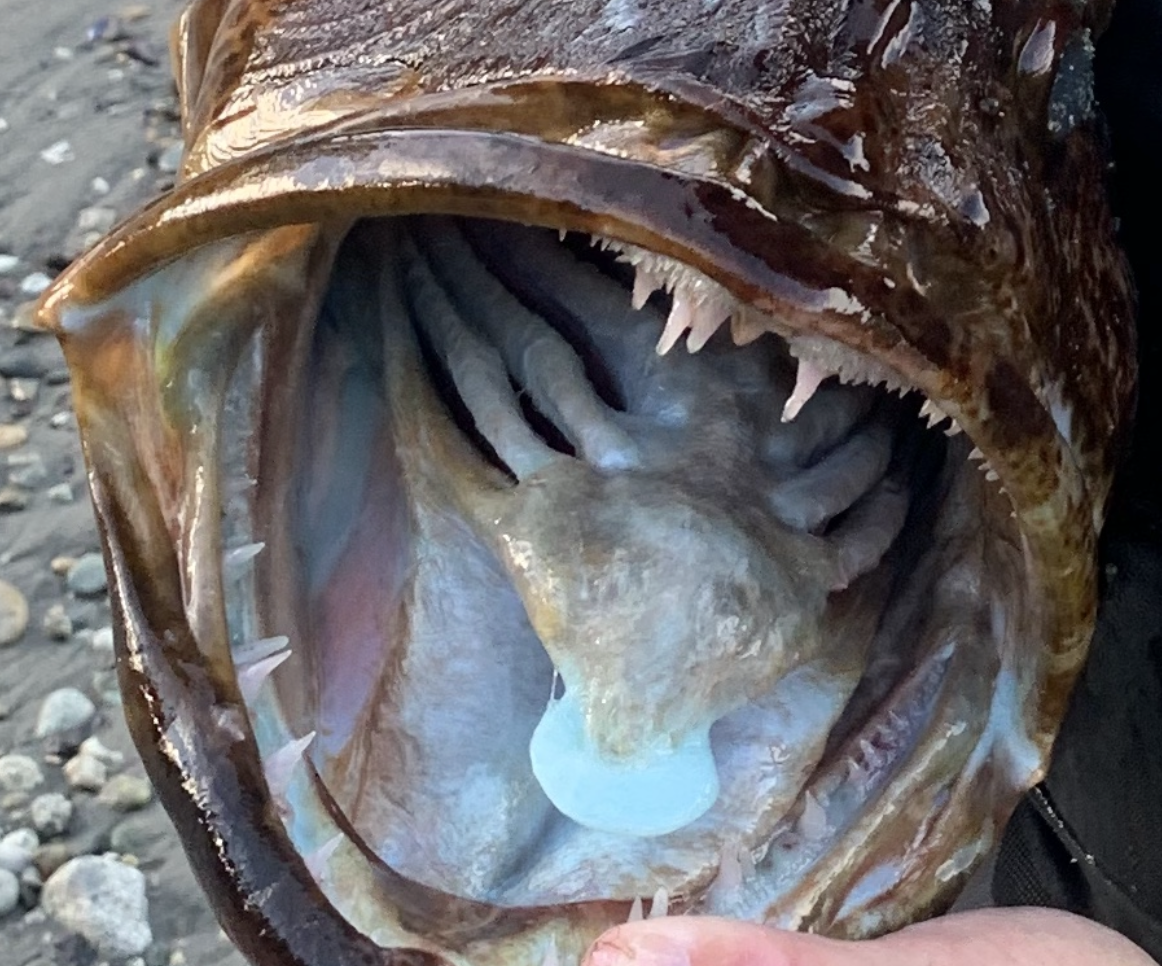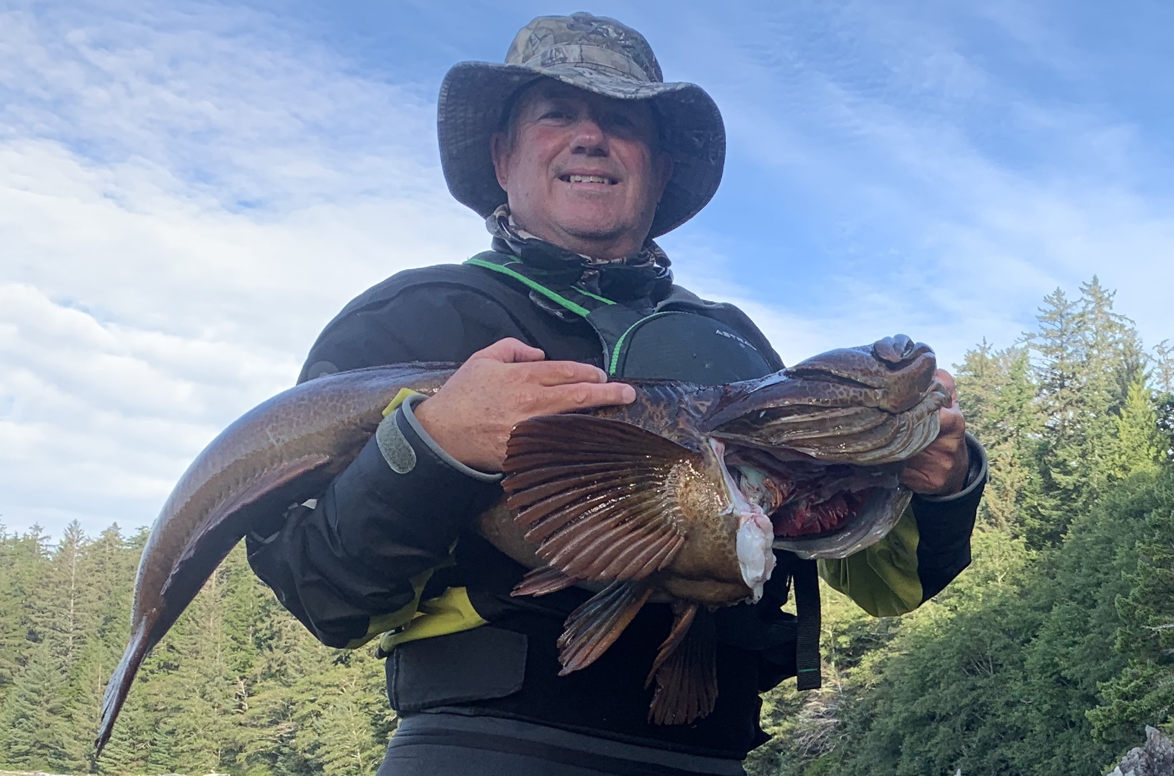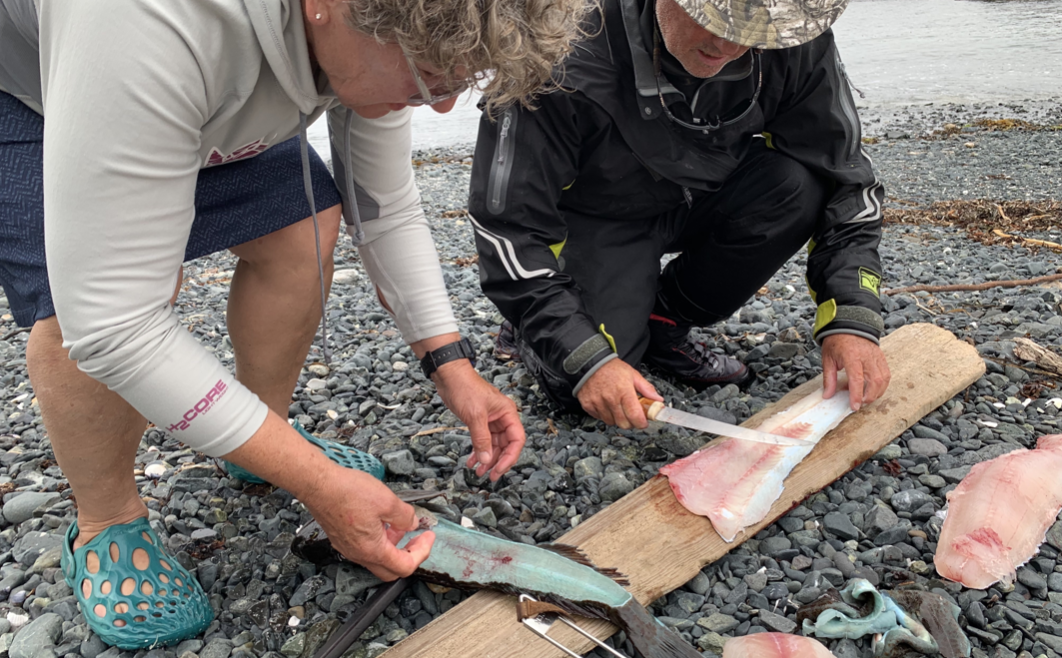Kayak Fishing 101
“I love fishing from my kayak so I wanted to share a few tips on how to get the most out adding this activity to your kayak trips.”
Let me start my saying I don’ fish for fun or sport, only to supplement the expedition food. There is nothing better, and I really means this folks, than fresh fish for supper - so let's get started.
FISHING GEAR
Tip #1- Keep it simple and don't spend a fortune. You’ll need a rod, line, reel and lures, you’ll also need some other things too but we can get to that later.
-
Choosing the right rod can be tricky, I use a one piece 6’ pretty stiff rod that fits on the deck of my NDK Explorer without hanging over the bow. This helps me when I’m paddling in transit and the rod is stowed away. In the past I have used several two piece rods that can be broken down and stowed on the rear deck. Talk to your local outfitter.
‘Gone Fishing’ and Buckleys in Duncan are very knowledgeable and are my GO TOs. -
Tip # 2 Avoid a casting reel and go for a jigging reel. Casting reels need for more maintenance than jigging reels, they can easily become cogged with salt and sand which will render them useless and end your fishing experience. Jigging reels are also far cheaper and easy to maintain in the field. Your local outfitter will add the line for you - choose a good strong line at will secure a heavy catch, I use 50lb breaking line.
-
Tip # 3 If you want to catch a big fish use a big lure! There are hundreds of lures out there and they vary greatly in cost. It's your choice. I like the metal headed rubber body ones with a “kick ass ” hook. Most lures have three barbed hooks at the tail. I cut off two of these hooks and remove the barb on the remaining hook. I want to give the fish a fighting chance and following this advice will also avoid loosing too many lures on the ocean floor.
Targeting Fish Species
I tend to fish for bottom feeders such as Lingcod and Rockfish. I don't tend to troll for Salmon although I have caught them jigging by accident. I don not target Halibut, way too big and difficult to land. You may have to cut your line! Catching a decent sized Lingcod is the best bang for your buck and will easily fed a group for dinner. They taste fantastic. Rockcod are also very tasty but require some different cleaning and cooking methods.
Tip # 4 - The Law. It is very important the you know in advance which fish are in season and legal to catch, plus they will have a minimum size (usually length) which you must adhere to. Different fish species have in and out season dates to allow them to breed and ensure populations re maintained. Some areas have total fishing bans so make sure you know in advance where you can fish legally. Read about licenses & current Regulations.
Where to Fish
Much of the skill in catching fish is understanding where they live.
Tip # 5 Get a chart of the area. If you are targeting bottom feeders such as Ling Cod your chart will help you identify where they may be lurking. Look for areas with a steep drop off underwater “beige to white with no blues” and steep contour lines. Navionics is also a great resource for finding good fishing spots.
Jigging
Jigging is pretty simple. Position your kayak over your chosen fishing spot and drop in the lure. Let the line run out until you feel the lure hit the bottom and quickly reel in about 10’ or so depending on swell conditions. Now bounce the lure up with a flick of your wrist and let to drop back down again. This mimics an injured fish and with a little practice you will be catching supper in no time.
Tip # 6- No luck after a few minutes - move on to another spot
Game changers
This next section describes the two biggest game changers for me and comes in the shape to two essential pieces of equipment, “gaff and needle”. A gaff is a big hook on a short wooded stock with a line tied to it so you secure it to the deck of the kayak via a carabina clipped onto the perimeter line (right hand side for me). The needle is a handmade from a piece of wood, normally cedar, that’s about 10” long and carved to the shape of a large needle. It has hole at the top with a 2 meter length of line attached. Again this is secured to the kayak on the same carabina. To land a big fish you will need to use the gaff to hook through is mouth, this will help you slide the needle through the gills and tighten the line. Tie an “Alpine Butterfly Knot” in the line and clip into the carabina on the deck. Your fish is now secure. Finally, take a very Sharpe folding knife and cut the fishes throat gill to gill. This will kill the fish and “bleed it out”
Tip # 7 -Bleeding out the fish in the water will keep the white flesh clean and help when stowing the fish for transport in a kayak hatch. Less mess. I don't use landing nets.
Cleaning and Cooking your catch
If you are not prepared to clean and cook your catch - Don't go fishing!!
Catching a fish is the easy part, cleaning it can be tricky and wasteful if not done well. You will need a really sharpe flaying knife. I carry a sharpening stone in my ditch kit and sharpen the knife after every fillet. There are many ways to fillet but it takes patience and practice, plus a flat surface. So look out for drift wood and planks that you can use. I have added a tube link below on how to fillet a ling cod.
Cooking
I have used many cooking methods. Hot rocks, frying pans, placing foil wrapped fillets in hot coals to name three. What ever you do remember don't over cook the fish and dispose if fish waste, guts heads bones in the ocean where the crabs can get them.
Tip # 8- Do not leave on the beach as they will attract Bears, Wolves and other scavengers.


